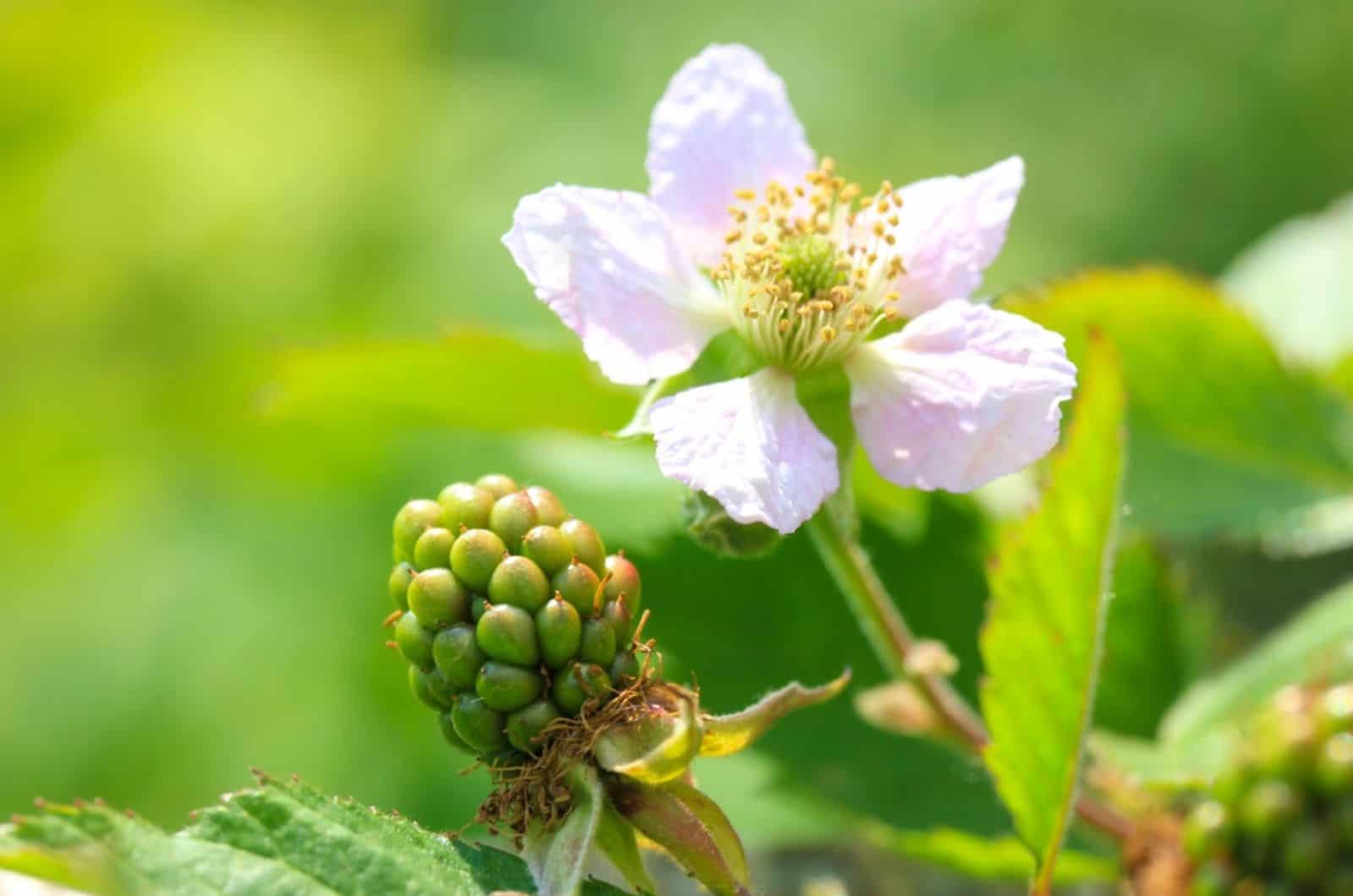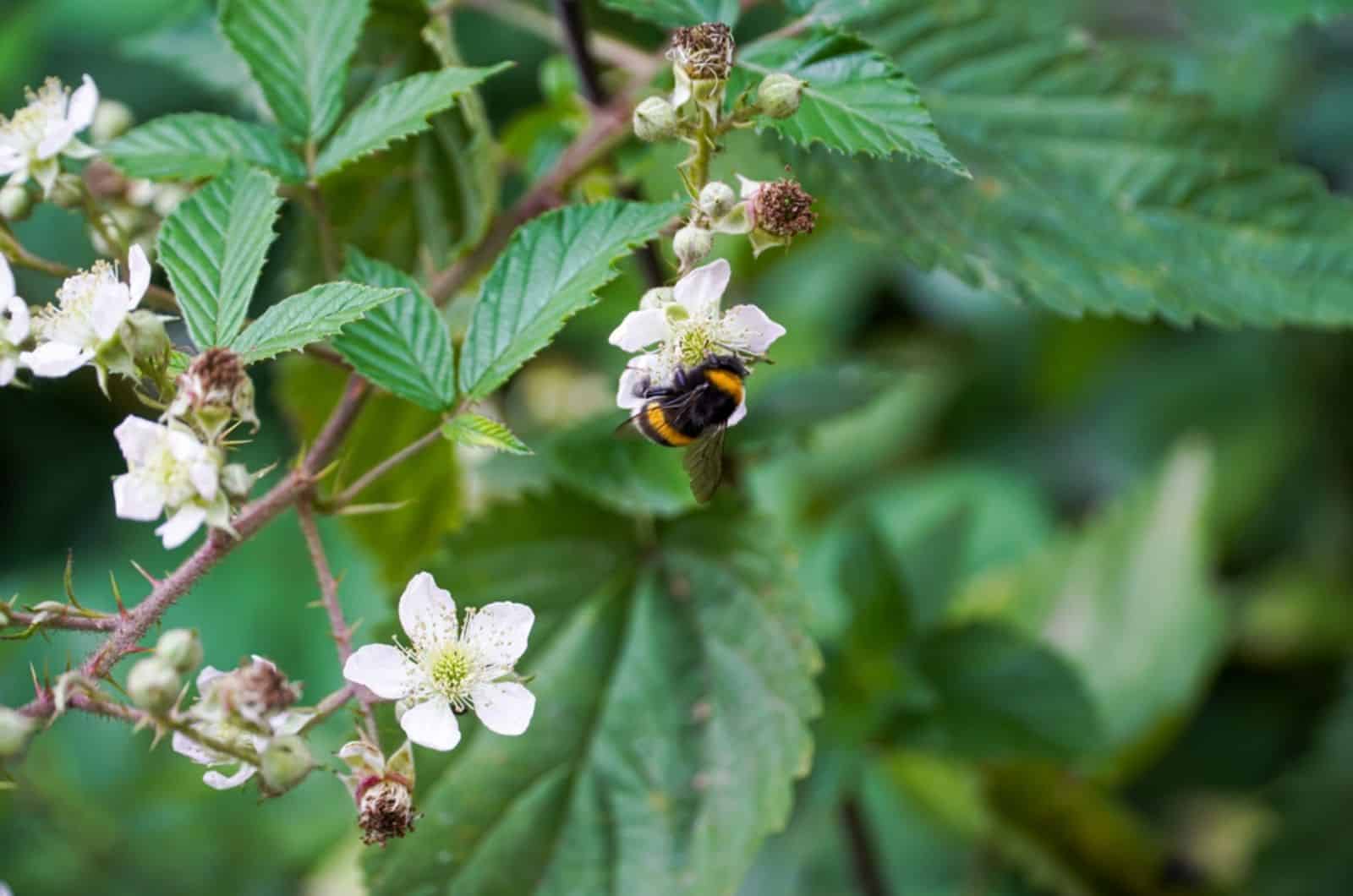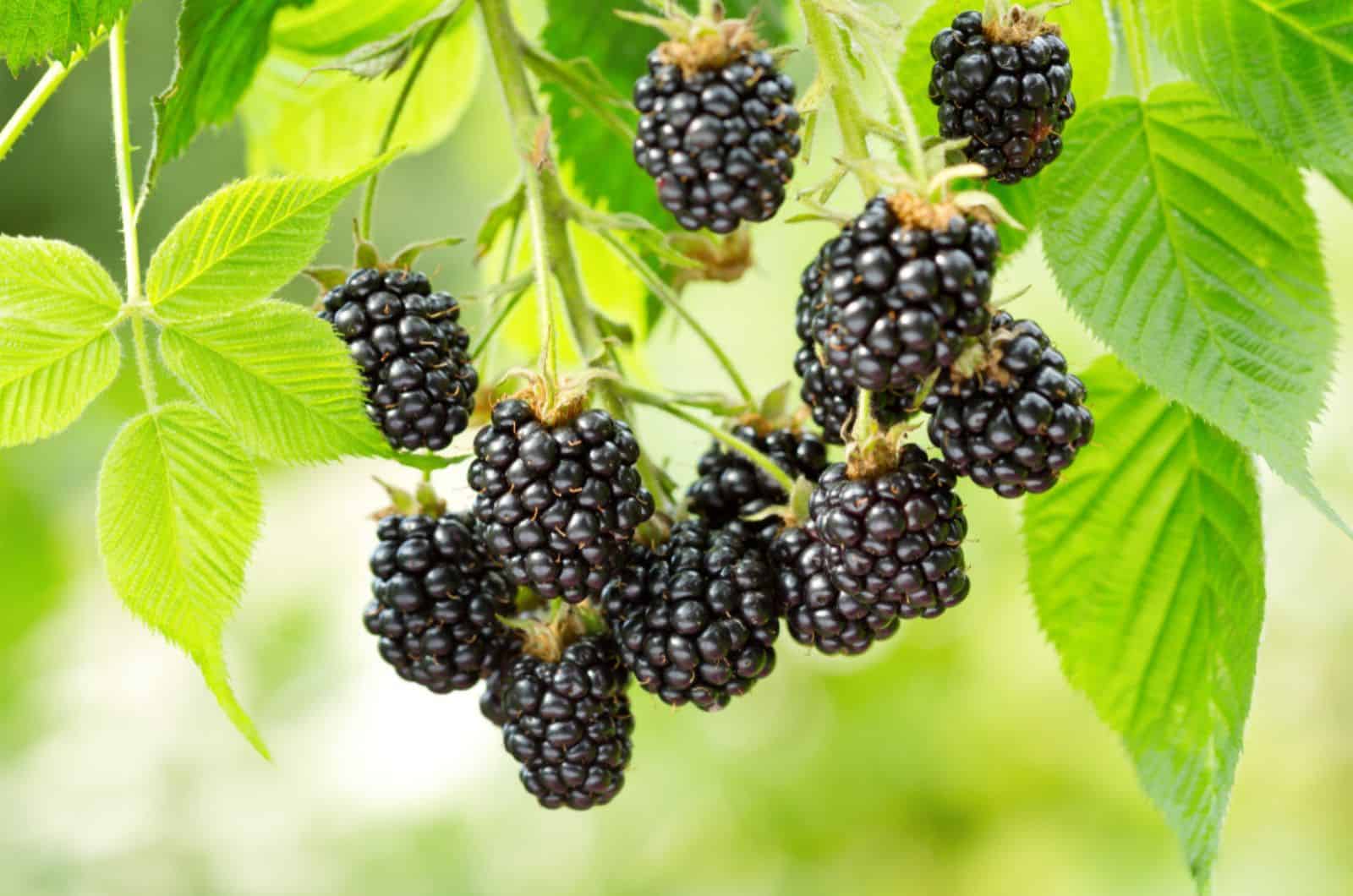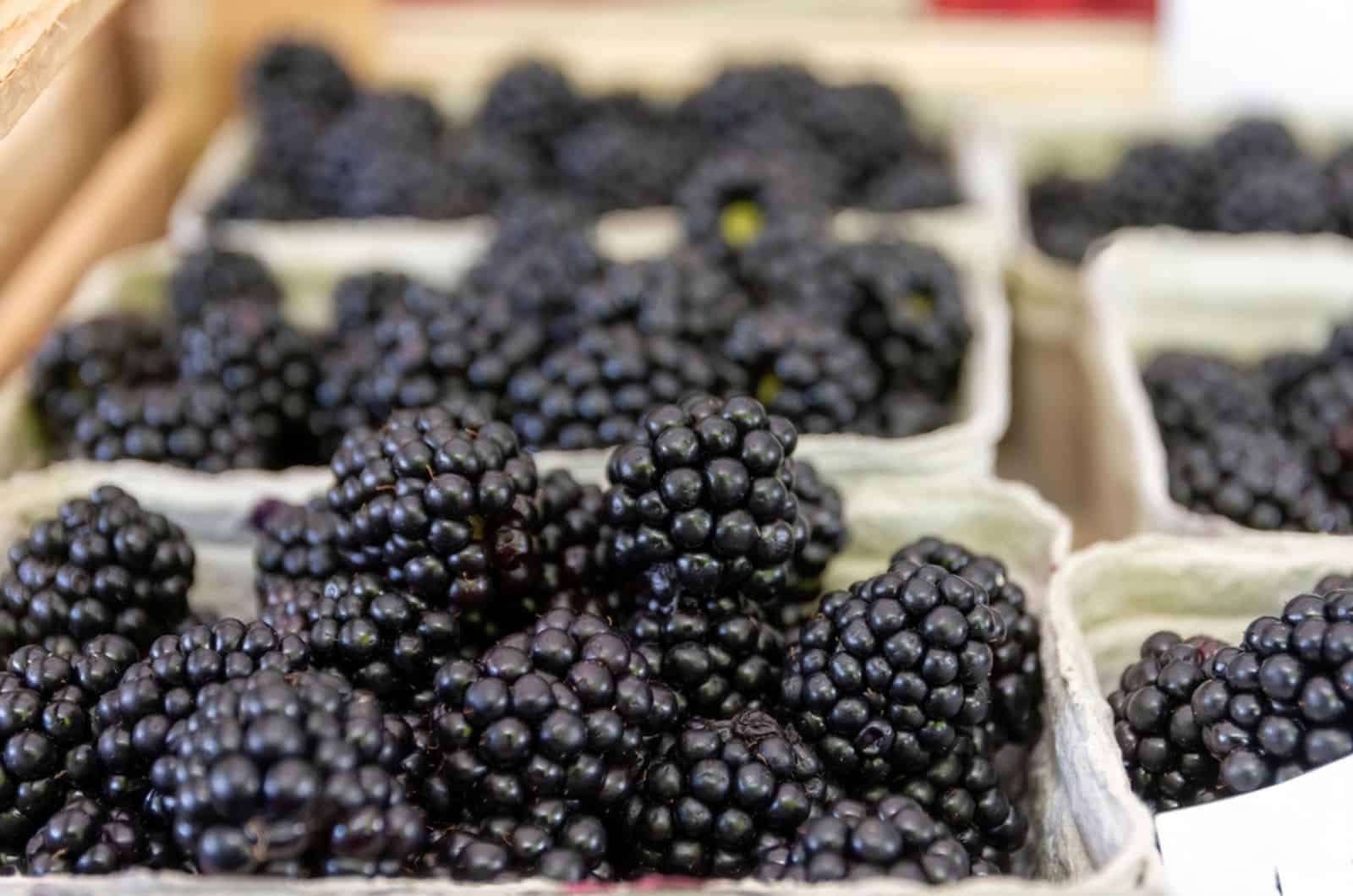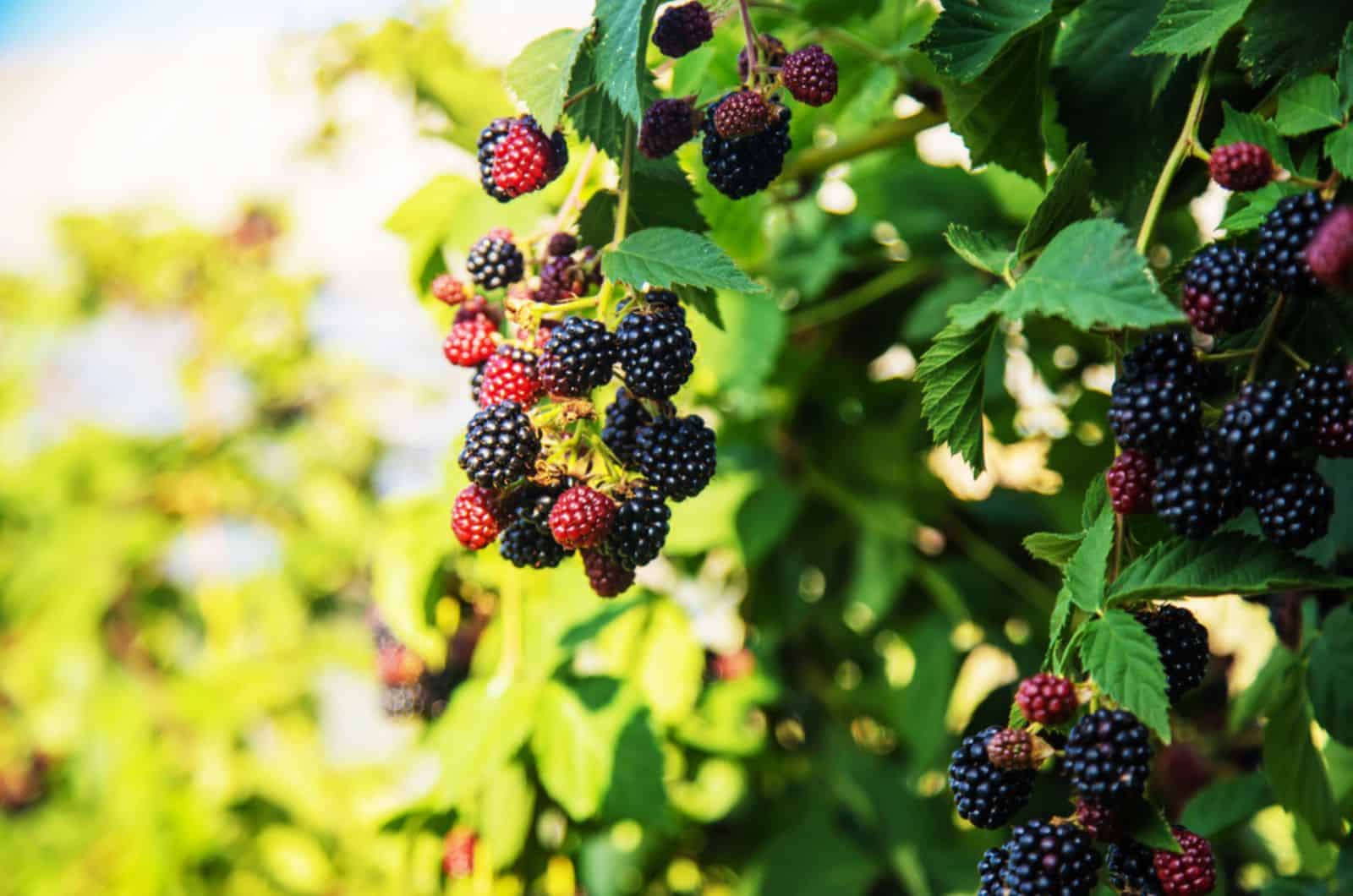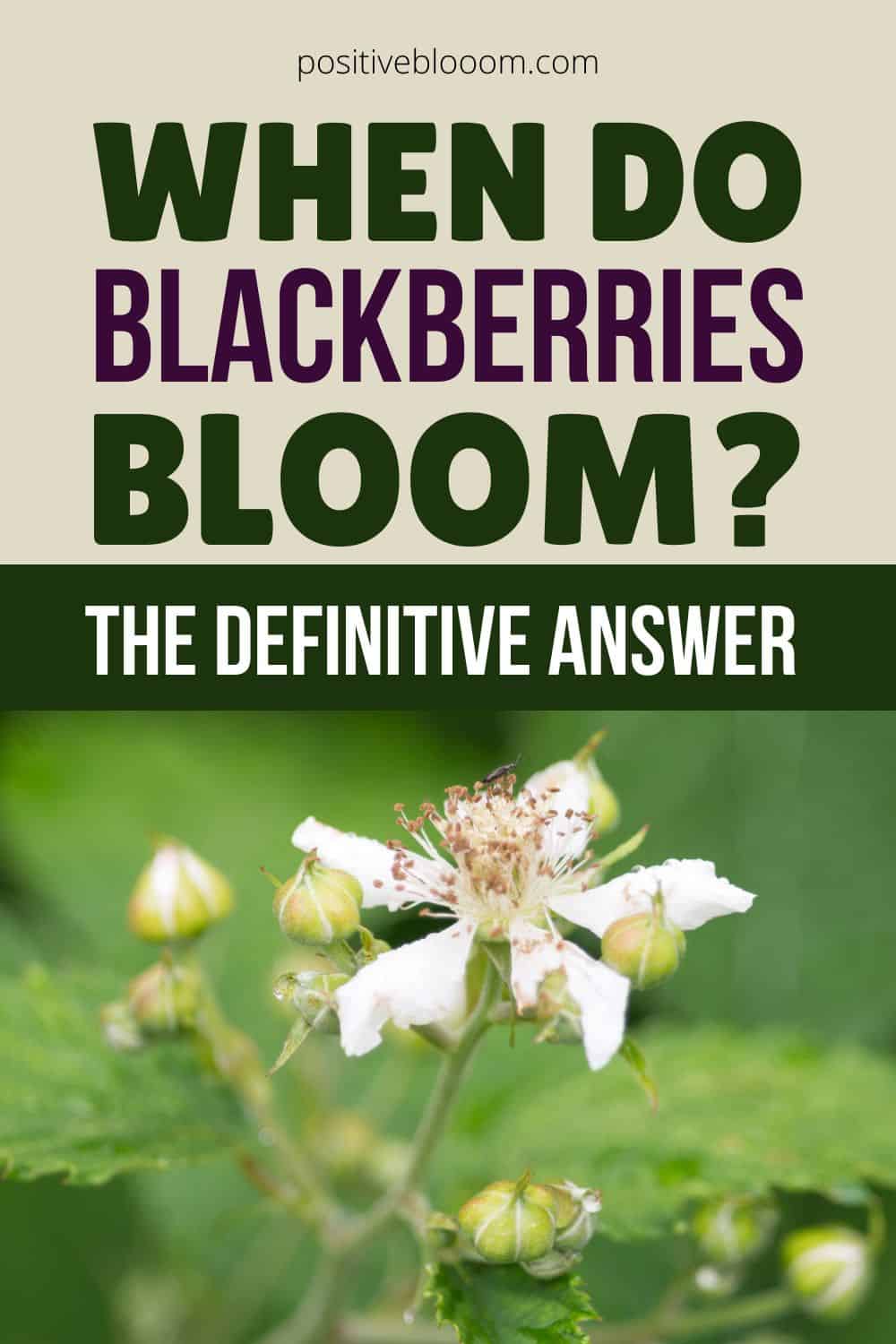Blackberries are a delicious fruit that we can use to make jams, juices, and drinks or to enrich our apple crumble pie.
I’ve always said there’s nothing like homegrown fruits and veggies, and once you taste the fruits of your labor, you’ll know this immediately.
Therefore, planting and growing a couple of blackberry bushes might seem like an excellent idea; and it is.
There are a couple of things you should know to prepare for a harvest, and the first one is the answer to, “When do blackberries bloom?”
We’ll tackle this and some other questions about this fruit, such as when they produce fruit, how to harvest and store them, tips for planting and growing them, and more.
But before we get to all of that, let’s look into the basic info about blackberries:
[table id=321 /]
When Do Blackberries Bloom?
There are a couple of factors we need to consider when talking about blackberry blooming times. For instance, different varieties will bloom at different times, and we always have to consider the weather too.
In warmer USDA zones (7 and above), blackberry plants usually produce flowers in mid-April and early May, but in colder regions (zones below 7), blackberries start blooming in late May.
Therefore, you can choose whether you want early or late-blooming blackberries based on your needs and the hardiness zone where you live.
One of the more popular early-blooming blackberry cultivars is Choctaw, which can grow in USDA zones 8–9, but it is rather thorny, which might be off-putting for some.
There are also thornless blackberry varieties, such as Navaho and Arapaho. But, many growers prefer Arapaho as it produces fruit approximately 11 days before Navaho (so we can safely conclude that it also starts blooming before the latter variety).
When Do Wild Blackberries Bloom?
We’ve examined some domesticated types of blackberries and their blooming times, but what about wild ones?
Does their flower production occur at the same time?
They start flowering in late spring or early summer, but the blooming time can even run into August if the weather is cooler.
However, there are two common varieties and their flowering times differ.
Cutleaf blackberry usually flowers from July to August, although it may bloom as early as May in some warmer states, while the Himalayan type blooms from June to August.
When Do Blackberry Bushes Bloom In The United States?
Blackberries (also known as brambles) usually start producing flowers in mid-to-late spring in the South.
However, blooming is delayed as you move further north, so you can expect tiny flowers to appear in late spring or even in early summer if the temperatures are colder.
However, if you live in warmer climates, flowers may appear as early as mid-to-late March.
How Long Does It Take Blackberries To Bloom?
The first canes that sprout from the soil are known as primocanes and don’t usually bear flowers in the first year.
But, if you have planted your blackberry canes in the fall, you shouldn’t be surprised if you notice a flower or two the following spring. However, you shouldn’t let these flowers turn into fruit, even though it is tempting.
Prune them so your plant can develop a stronger root system that will support the larger harvest in the second year.
Primocanes should be left to produce lateral branches and leaves and to form leaf buds before they go dormant in the fall. They will later wake up as floricanes that can bloom and bear fruit, ensuring you get a large yield.
Therefore, blackberries will flower the next year, so you will have to wait some time before you can harvest the fruit from the new canes.
Do Blackberries Bloom More Than Once?
Blackberries bloom once a year, and once the flower opens, it gets pollinated, and the fruit is set. Once the flower turns into a fruit, the same place cannot produce the flower once again.
Thankfully, blackberries have perennial roots, so you won’t have to plant new canes every other year to enjoy this delicious fruit. Although, the part of the plant above the ground is biennial, meaning it will die after the second year’s harvest.
However, there are so-called ever-bearing blackberry varieties that can produce flowers and bear fruit on the new growth of old canes. The new canes can then produce another crop in the fall.
When Do Blackberries Produce Fruit?
Blackberries produce fruit 45–60 days after flowering, but pollination has to occur before the fruit can be set.
Thankfully, these bushes and vines are self-fertile, meaning that you don’t have to have two plants to pollinate them.
Once their blossoms open, they attract various pollinators to your home garden, and your other plants will benefit from this plant too.
The blackberry season usually lasts from mid-to-late summer (so from July to September), and you can pick the berries for 2–3 weeks before the plant finally stops its fruit production.
But let’s get one thing clear before moving on to harvesting blackberries. Just like raspberries have seeds, so do blackberries, so you’ll have to manage with those tiny pits under your teeth.
However, some commercial growers have had success in producing blackberries with seeds so tiny you can barely feel them.
Harvesting Blackberries
Harvesting your crop doesn’t seem that difficult; all you’ve got to do is take the fruit and remove it from the plant. But when exactly should you pick blackberries?
Well, the fruit of this plant cannot ripen after being picked, so you should be 100% sure that they are ready for harvest.
For instance, many beginners tend to pick fruits as soon as they turn black, but that’s a classic mistake.
Such blackberries aren’t yet ripe and sweet enough, and you’ll be left with a bitter taste in your mouth.
Instead, wait about 3–4 days after the fruits have turned black for the sweetest blackberries.
You should also harvest your fruits and veggies early in the morning before the heat can make your plant wilt and droop due to the higher evaporation rate.
If picking the crop in the morning is not possible, you can do it in the evening, when the plants have had some time to recover from the midday heat.
Storing Blackberries
Usually, after picking my fruits and veggies, I feel fulfilled and happy that I have had such a plentiful yield; but then that ever-present question arises, “What do I do with so much fruit?”
Well, you can always eat your fill and then store the rest for future use.
For instance, blackberries can last for about a day in the open air, but if you wash, dry, and refrigerate them, they can stay fresh for about 2–3 days.
Of course, you can always freeze them and then thaw them once you’re ready to make that cake or pie.
Another thing I love doing when I have too much fruit is making juices or jams.
My favorite blackberry jam recipe is rather simple; just cook the blackberries, sugar, and lemon juice together for about 20 minutes, and you’ll have a homemade treat.
(Of course, you might need more time if you use more than two pounds of blackberries.)
I altered the recipe slightly and add less sugar since I really like the sour taste of blackberries on buttery toast.
How To Plant And Grow Blackberries
The first thing you need to do before planting your blackberries is choose the variety. You should choose between erect, semi-erect, and trailing blackberries, thorny or thornless.
Triple Crown is one of the popular semi-erect thornless cultivars that bears those huge juicy fruits ideal for eating raw or using in cakes.
But if you want an erect thornless blackberry bush, you won’t make a mistake with the Prime-Ark Freedom cultivar.
If you want a trailing blackberry to keep your raspberry plant company, you can opt for a Pacific blackberry. It has the smallest fruits among these varieties, but they are equally delicious and perfect for jams and juices.
Of course, always bear in mind your USDA zone since not all blackberries can handle the cold present in zone 4.
After choosing the variety, it’s time to start planting!
How To Plant Blackberries
Erect blackberries can grow on their own, but semi-erect and trailing plants require some support, so consider placing some trellises into the soil when planting.
Another thing you need to be very careful about is the location. Choose a spot where your brambles will have enough space to grow and where the full sun will shine on them, ensuring the sweetness of the fruit.
You should also prepare the soil properly before planting. Blackberries need a fertile and well-draining medium, so consider planting them in raised beds if your garden soil is too heavy and amending it with compost.
Add draining materials in the summer or fall before planting blackberries, and ensure that the pH level is between 5.5–6.5, or else your plants will have difficulty absorbing nutrients.
Once everything is ready, you can start planting your blackberries. The best time to do this is in the early spring or fall since temperatures are colder, and your plant can handle the relocation easier.
Make sure that your blackberries have enough room to grow. Plant erect varieties 2–3 feet apart, semi-erect 5–6 feet apart, and trailing blackberries 4–6 feet apart.
Dig a deep hole so the plant’s entire root system can fit in it, and then backfill it with soil.
And don’t forget to water the plants after planting.
Mulch the plants with pine straw, wood chips, or black plastic to prevent weed growth and excessive moisture loss.
Here are some more tips for planting blackberries:
Care Guide Overview
We already mentioned some of the important aspects of plant care, such as light exposure and type of soil, but there are some other things that you need to pay attention to in order to increase your yield and prevent any problems with these plants.
For instance, if you don’t plant blackberries in a location with full sun, the fruits will be scarce and less sweet. Furthermore, these fruits require 1–2 inches of water each week. The best way to administer it is to irrigate your plants twice a week during their growing season and double the amount of water during the harvesting weeks for more sweetness.
Blackberries are best grown in USDA zones 7–9, where winters aren’t too harsh. However, there are varieties that can survive even in zone 4, so you need to do your research before planting. These fruits don’t require too many chilling hours, but 300 hours (or more) of temperatures below 45 °F will do them good.
You can apply well-balanced, slow-release fertilizers in early spring or add some compost, manure, or organic fertilizers if you want to keep your garden organic.
You should also regularly prune blackberries to increase the fruit yield. Since this can be tiresome, consider getting some secateurs for arthritic hands since they have ergonomic handles and require less pressure.
Once the primocane reaches a height of 3–4 feet, you can cut its tip at a 45 ° angle to encourage lateral branching. After fruiting, you should cut the floricanes as they cannot produce more fruit.
Here is a more detailed guide on pruning:
FAQ
Blackberries are pretty popular, alongside raspberries, blueberries, and strawberries, so we do need to discuss them a bit further.
We decided to answer some of the questions you’ve frequently asked us and examine the most common blackberry varieties and the benefits of this fruit that make it so desirable.
What are the most common blackberry varieties?
The most popular and widely grown types of blackberries are thornless Apache, Navaho, Arapaho, and Triple Crown cultivars.
However, there are also thorny varieties, such as Kiowa and Prime-Ark cultivars, that produce large and delicious fruits no one can resist.
What are the benefits of blackberries?
There are many health benefits of blackberries, and since they are a great source of vitamins C and K, fiber, and manganese, they can help skin heal and regenerate faster, regulate blood sugar and reduce cholesterol, help with coagulation, and boost your immune system.
There’s even some research that connects brain health with antioxidants found in blackberries.
They can also help with cavities and gum disease as they have anti-inflammatory and anti-bacterial properties.
Final Words
This article focused on one main question, “When do blackberries bloom?”
But there are a couple of factors, such as different varieties and weather conditions, that we need to take into consideration before giving a definitive answer.
However, we can still say that these plants usually produce flowers in late spring or early summer, depending on the factors mentioned above.
We also included some more information about flowering blackberries and their fruit production.
Finally, we all grow blackberries for their fruit, not flowers, so we brought you some tips for harvesting and storing blackberries, as well as some tricks for planting and caring for them.
Until next time!
Like this post? Share or pin it for later!


